Back to Don's Maps
 Back to Archaeological Sites
Back to Archaeological Sites
 Back to the review of hominins
Back to the review of hominins
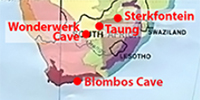 Hominid sites in Africa, including Homo sapiens
Hominid sites in Africa, including Homo sapiens
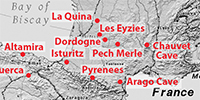 Hominid sites in Europe, including Homo sapiens
Hominid sites in Europe, including Homo sapiens
Oreopithecus bambolii - the swamp ape
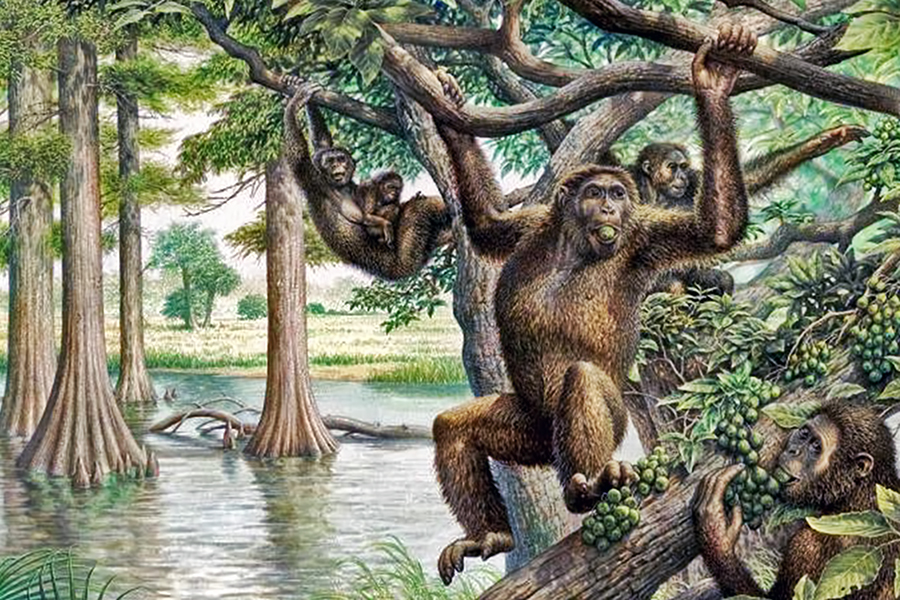
An ape which was 120 cm tall and weighed 30 kg, with a brain capacity of up to 200 cm3 lived in swampy areas of what is now Italy, 10 to 8 million years ago.
The long forelimbs are indicative of tree-dwelling.
Photo: © John Sibbick
Source: www.utoronto.ca
Text: Anthropos Pavilion/Moravian Museum, Brno, Czech Republic
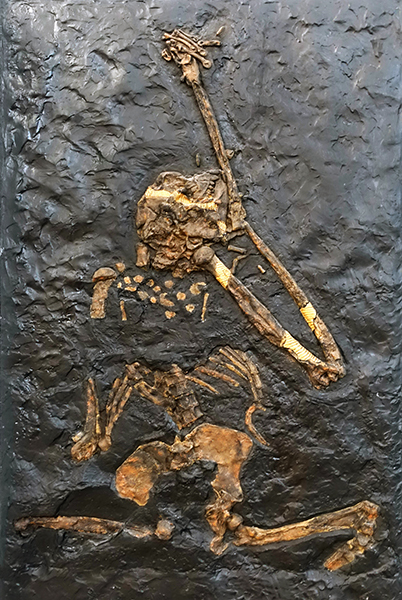
It is now believed that the 'Swamp Ape' walked on all fours rather than having a bipedal stance. When Oreopithecus bambolii was alive, Italy formed a string of islands that were covered with swampy forests and teeming with crocodilians, where Tuscany and Sardinia are now.
The ape went extinct after a land bridge connected their island to the mainland, allowing large saber-toothed cats and other predators to stalk the island.
This extremely flattened, fossilised skeleton of an ancient ape was found embedded in a slab of coal.
Photo: Don Hitchcock 2018
Source: Facsimile, Anthropos Pavilion/Moravian Museum, Brno, Czech Republic
Text: www.nbcnews.com
Montebamboli is a hamlet and locality in the commune of Massa Marittima, Tuscany, Italy.
Montebamboli is also known for its high-quality lignite coal, located along the river Riotorto.
A number of fossil species have been discovered in the lignite beds around Montebamboli, including the first fossils of the hominid species Oreopithecus bambolii, and the unusual waterfowl species Bambolinetta lignitifila, both of these species named after the settlement.
Text above: Wikipedia
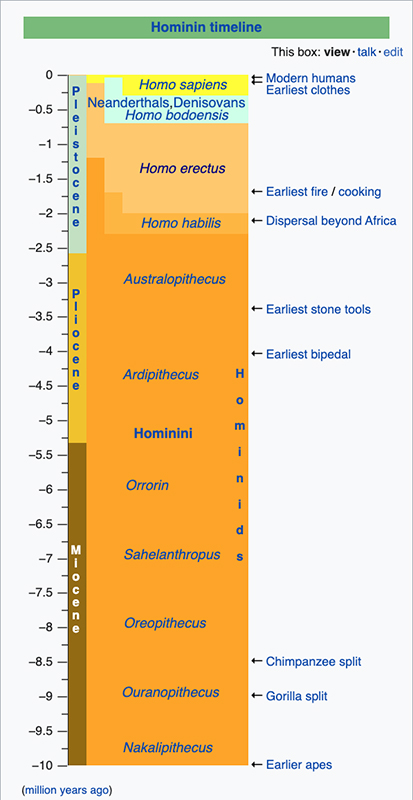
Oreopithecus bambolii on a hominid timeline, predating Sahelanthropus by approximately one million years.
Graphic artist: unrecorded
Source: Wikipedia
Permission: Creative Commons Attribution-ShareAlike License 3.0
References
- Gervais P., 1872: Sur un singe fossile, d'espèce non encore décrite, qui a été decouvert au Monte-Bamboli (Italie)", Comptes rendus de l’Académie des sciences, 74: 1217–1223
- Köhler M., Moyà-Solà S., 1997: Ape-like or hominid-like? The positional behavior of Oreopithecus bambolii reconsidered, PNAS, Vol. 94 | No. 21, https://doi.org/10.1073/pnas.94.21.11747